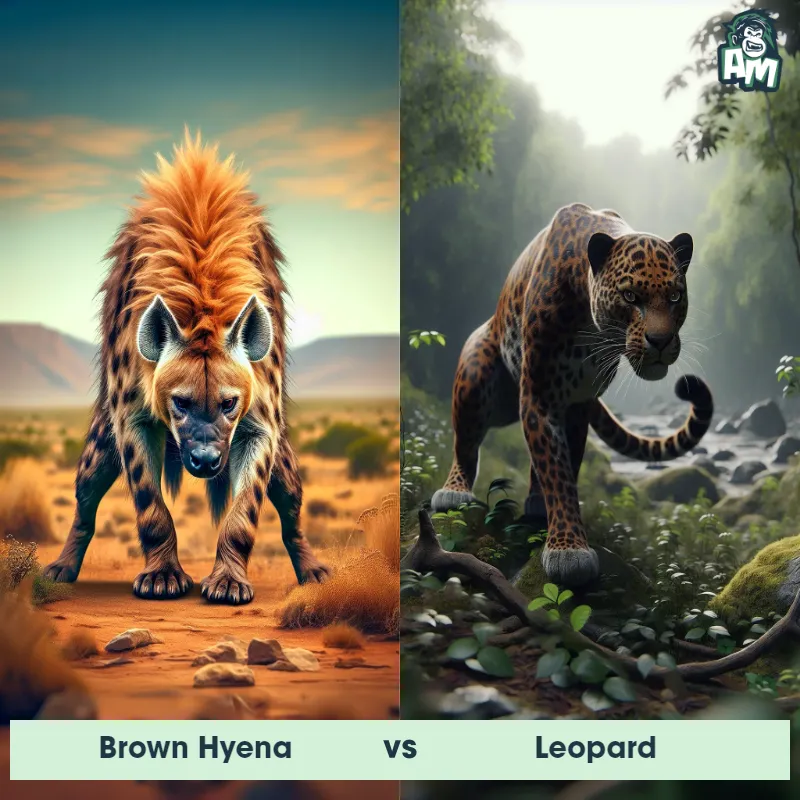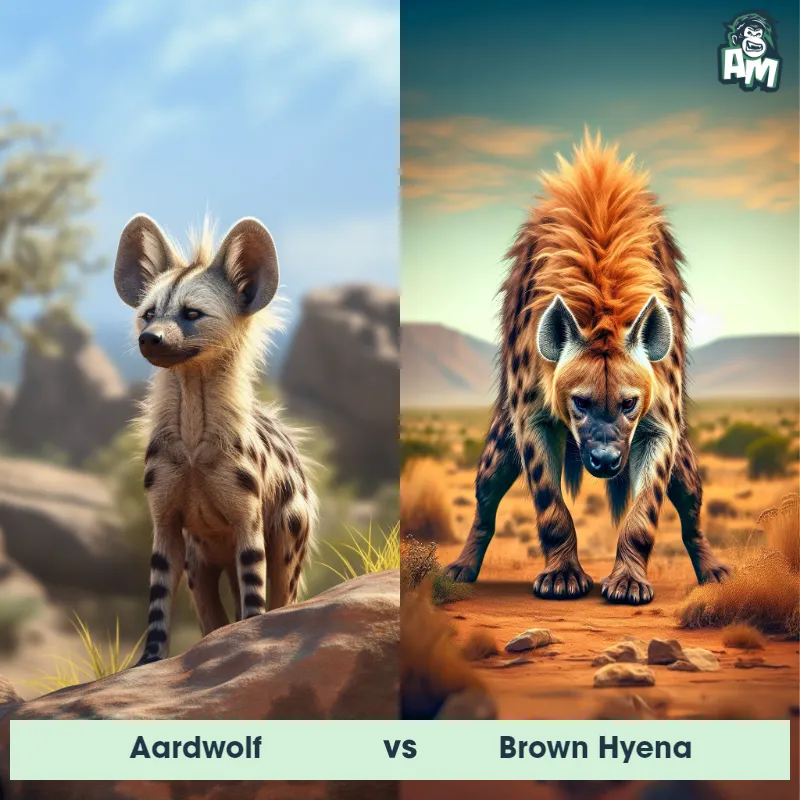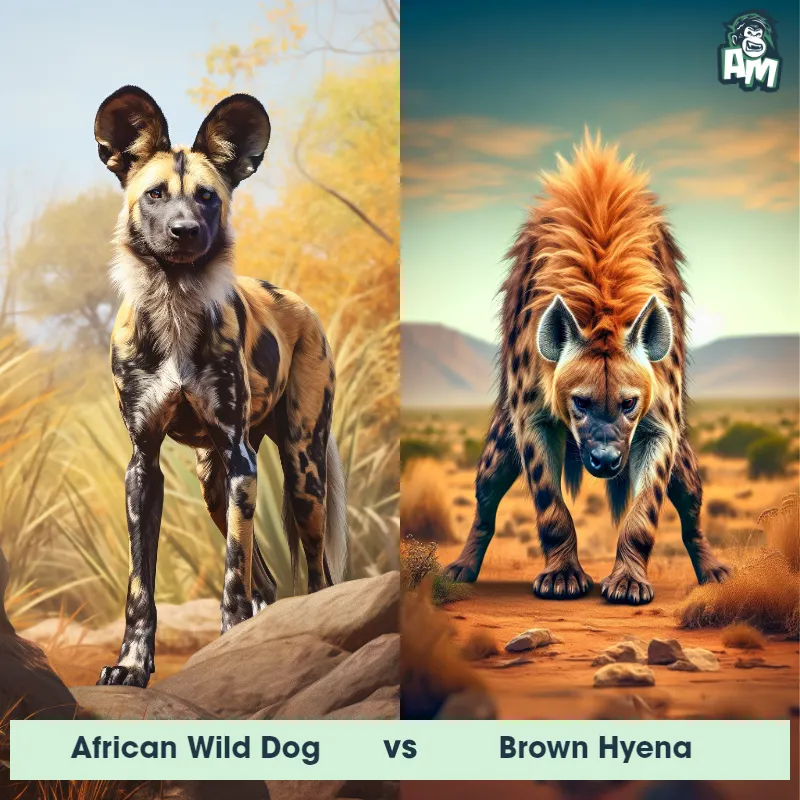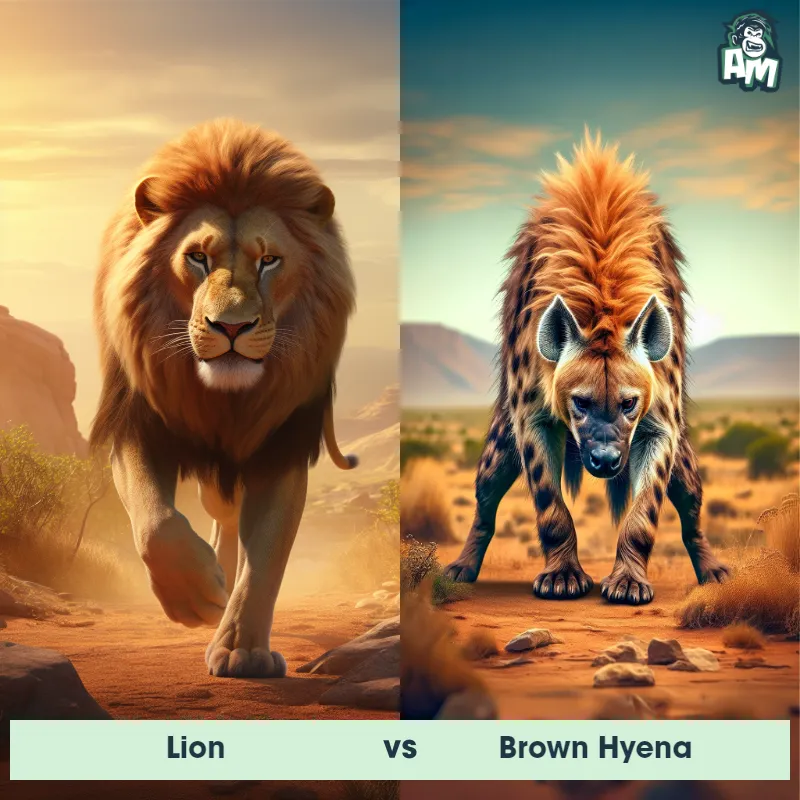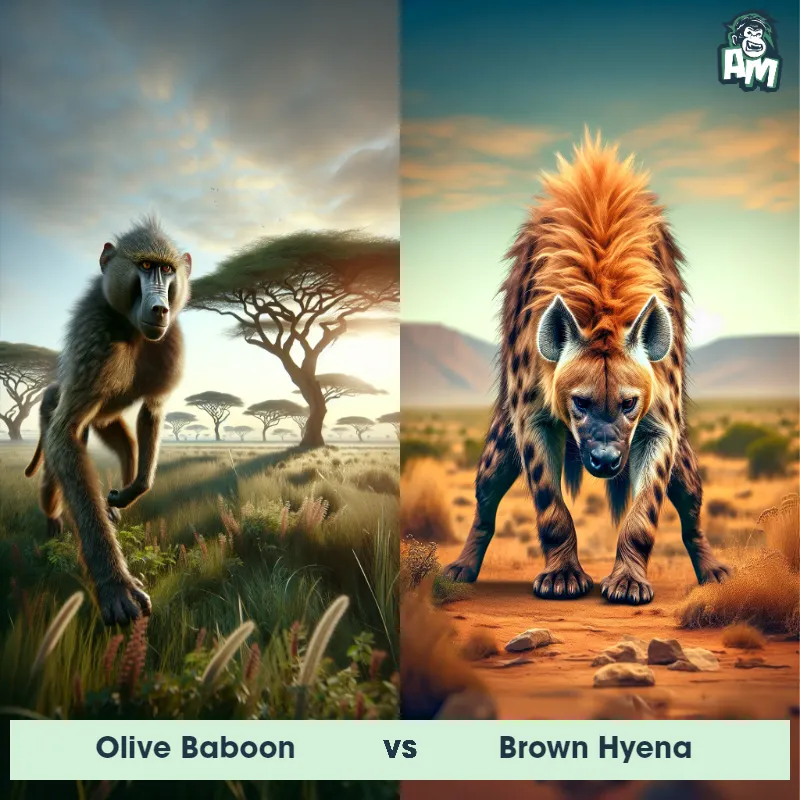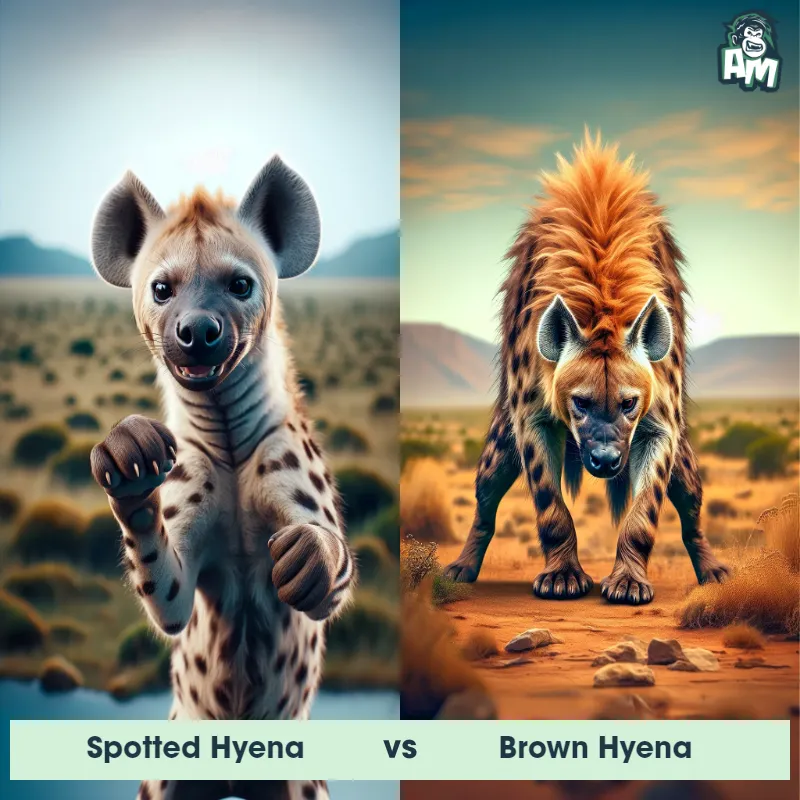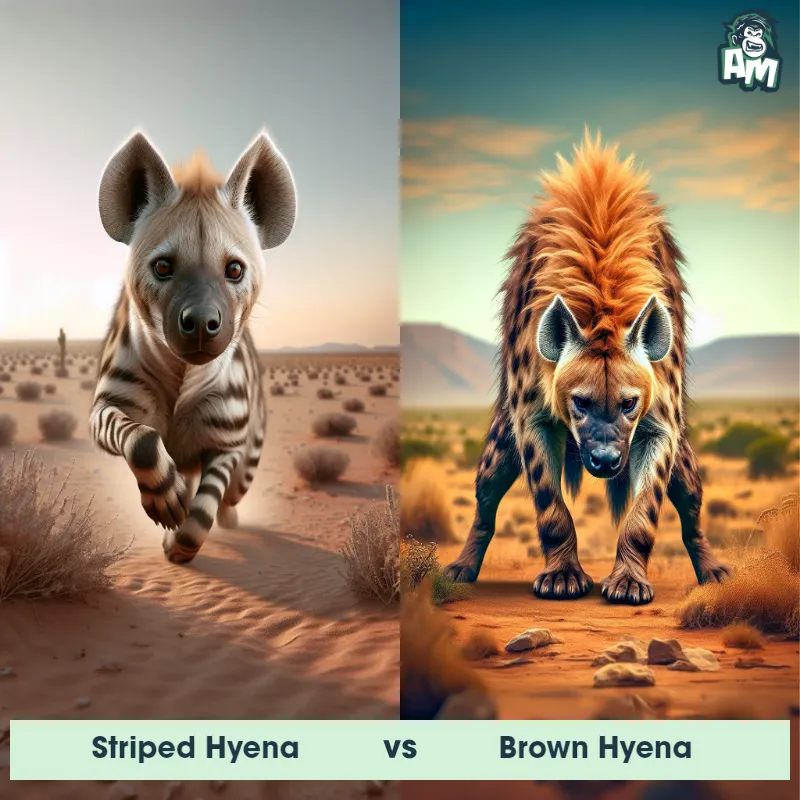The Brown Hyena
The Brown Hyena, also known as Parahyaena brunnea, is a carnivorous mammal native to southern Africa. It is characterized by its shaggy fur, which ranges in color from yellow-brown to dark brown, and its hunched-back posture. Brown Hyenas have a robust build, with elongated forelimbs and a sloping back, giving them a distinctive appearance. They have powerful jaws and large teeth, specialized for scavenging, and a strong sense of smell to locate carrion. Unlike other hyena species, the Brown Hyena is primarily nocturnal, using its excellent hearing and night vision to locate food and avoid competition with other predators.

| Brown Hyena | |
|---|---|
| Size | Up to 1.5 meters (4.9 feet) long |
| Weight | Up to 40 kilograms (88 pounds) |
| Speed | 37mph (60km/h) |
| Key Strength | Powerful jaws and sharp teeth |
| Biggest Weakness | Short bursts of speed |
| Scientific Name | Parahyaena brunnea |
| Family | Hyaenidae |
| Habitat | Arid savannas, deserts, and semi-deserts |
| Geography | Africa |
| Diet | Carrion, leftovers from other predator kills |
| Lifespan | 10 years - 12 years |

The Brown Hyena
The Brown Hyena, also known as Parahyaena brunnea, is a carnivorous mammal native to southern Africa. It is characterized by its shaggy fur, which ranges in color from yellow-brown to dark brown, and its hunched-back posture. Brown Hyenas have a robust build, with elongated forelimbs and a sloping back, giving them a distinctive appearance. They have powerful jaws and large teeth, specialized for scavenging, and a strong sense of smell to locate carrion. Unlike other hyena species, the Brown Hyena is primarily nocturnal, using its excellent hearing and night vision to locate food and avoid competition with other predators.
Fun Fact: Brown Hyenas are known for their unique laughing calls, which sound more like whoops and squeals rather than the roaring laughs of other hyena species.
| Brown Hyena | |
|---|---|
| Size | Up to 1.5 meters (4.9 feet) long |
| Weight | Up to 40 kilograms (88 pounds) |
| Speed | 37mph (60km/h) |
| Key Strength | Powerful jaws and sharp teeth |
| Biggest Weakness | Short bursts of speed |
| Scientific Name | Parahyaena brunnea |
| Family | Hyaenidae |
| Habitat | Arid savannas, deserts, and semi-deserts |
| Geography | Africa |
| Diet | Carrion, leftovers from other predator kills |
| Lifespan | 10 years - 12 years |
Brown Hyena Matchups
We use AI to simulate matchups between the Brown Hyena and other animals. Our simulation considers size, strength, and natural predatory behaviors to determine the most likely outcome.
Brown Hyena: Diet, Predators, Aggression, and Defensive Behaviors
What do Brown Hyenas eat?
Brown Hyenas are opportunistic feeders, and their diet consists mainly of carrion, which includes animals that have died from natural causes as well as those killed by other predators. However, they are also known to hunt small vertebrates, such as birds, reptiles, and mammals, and occasionally scavenge from human settlements and garbage dumps. They have powerful jaws and teeth that allow them to crack open bones to access the nutritious marrow inside.
Do Brown Hyenas have any predators?
As adults, Brown Hyenas are apex predators in their habitats and have few natural predators. However, they may be targeted by larger carnivores such as lions and spotted hyenas when competing for food or territory. In some cases, humans may also pose a threat to Brown Hyenas through hunting, poisoning, or habitat destruction.
Are Brown Hyenas aggressive?
Brown Hyenas are generally solitary and elusive animals, preferring to avoid confrontations with other animals whenever possible. They are not known to be aggressive towards humans unless cornered or threatened. However, they may display defensive aggression if they feel endangered or if their food source is threatened.
Do Brown Hyenas engage in fights with other animals?
Brown Hyenas are not known to be particularly territorial, but they may engage in conflicts with other predators, especially over food sources. When faced with competition, Brown Hyenas will often use vocalizations, posturing, and scent marking to establish dominance before resorting to physical confrontation.
How do Brown Hyenas defend themselves?
When threatened, Brown Hyenas have several defense mechanisms at their disposal. They are agile runners and can reach speeds of up to 60 km/h (37 mph) to escape danger. They also have strong jaws and sharp teeth that they can use to defend themselves in a fight. Additionally, Brown Hyenas may vocalize loudly and emit a foul-smelling secretion from their anal glands as a warning to potential threats.
What is the biggest weakness of Brown Hyenas in a fight?
Despite their powerful jaws and sharp teeth, Brown Hyenas are relatively smaller and lighter than some of their competitors, such as lions and spotted hyenas. This size disadvantage can make them vulnerable in physical confrontations, especially when facing larger or more aggressive predators. Additionally, Brown Hyenas may lack the social support and pack mentality that some other carnivores possess, leaving them at a disadvantage in group encounters.
Fun Fact: Unlike their more aggressive cousins, the Brown Hyenas are relatively solitary and territorial, with each individual occupying and defending a specific territory.
Fun Fact: One interesting behavior of the Brown Hyena is their ability to bury and store carcasses for later consumption, which helps them survive during periods of food scarcity or competition with other scavengers.



